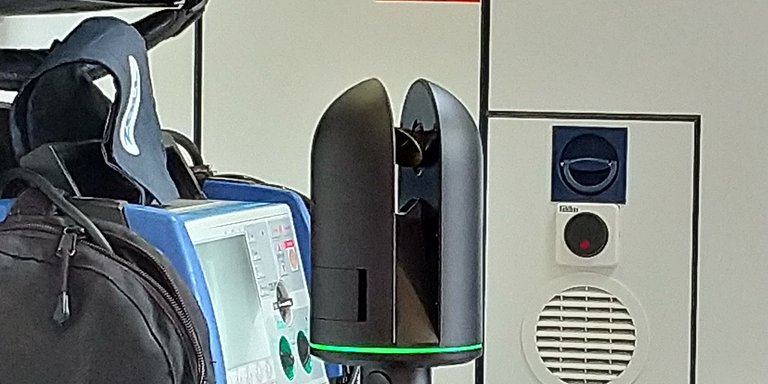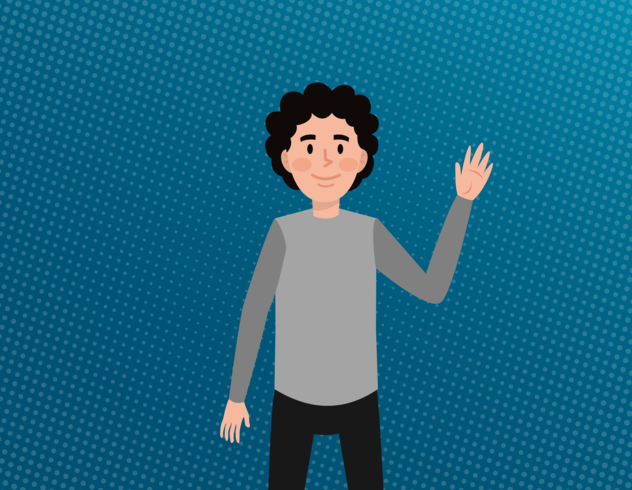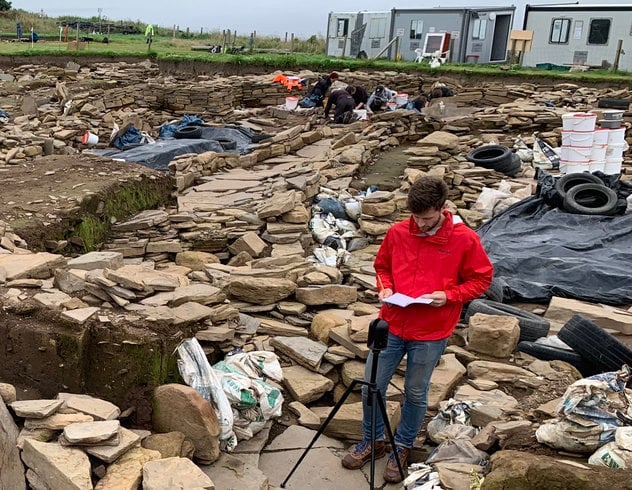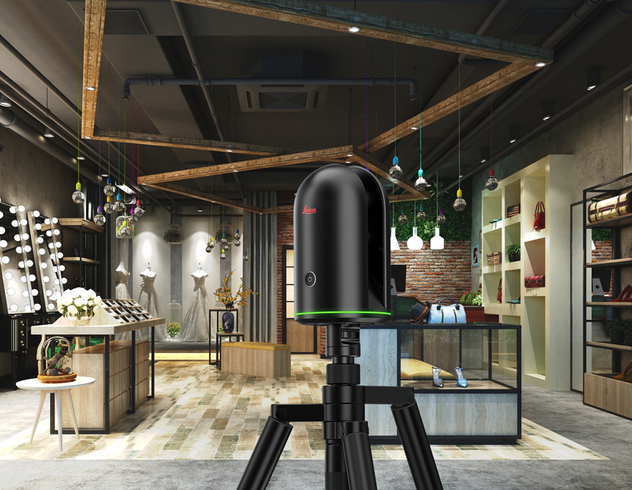In Germany, volunteer work is essential to a functional and harmonious society, and especially in the field of fire and rescue work. According to a 2014 German Survey on Volunteering, over 40% of the populace over age 14 participated in volunteer work, and a great deal of fire brigades and paramedic services are largely volunteer based. They serve their community by keeping watch at weekend festivals, sports events, and other public activities.
The German Red Cross (DRK) especially benefits from volunteer work. Thomas Pilz, project leader of Ausbildung mit VR (Training with VR) for the DRK, works in a unique field by creating VR training programs and digital lifelong learning for volunteer paramedics. According to Thomas, nearly 80% of DRK paramedics are volunteers. They often spend time away from their friends and families to contribute their skills to ambulatory, rescue, and first aid services—and to train with the DRK as they must learn how to work specifically within DRK ambulances.
DRK volunteer paramedics are usually required to spend at least an hour of on-site training in a DRK ambulance, which also means that DRK ambulances are removed from active service in order to train volunteers. Thomas’s work to create a VR training experience aims to improve training by making it efficient, effective, immersive, and flexible for volunteers.
“We saw how we could make their training more efficient, cost-effective, and also more appealing to young people by using VR,” Thomas said.
What we are after is a rescue vehicle simulator, not unlike a flight simulator. And we needed to make the VR simulator as realistic as possible, and that is when we realized that the BLK360 would be the best way to do that.
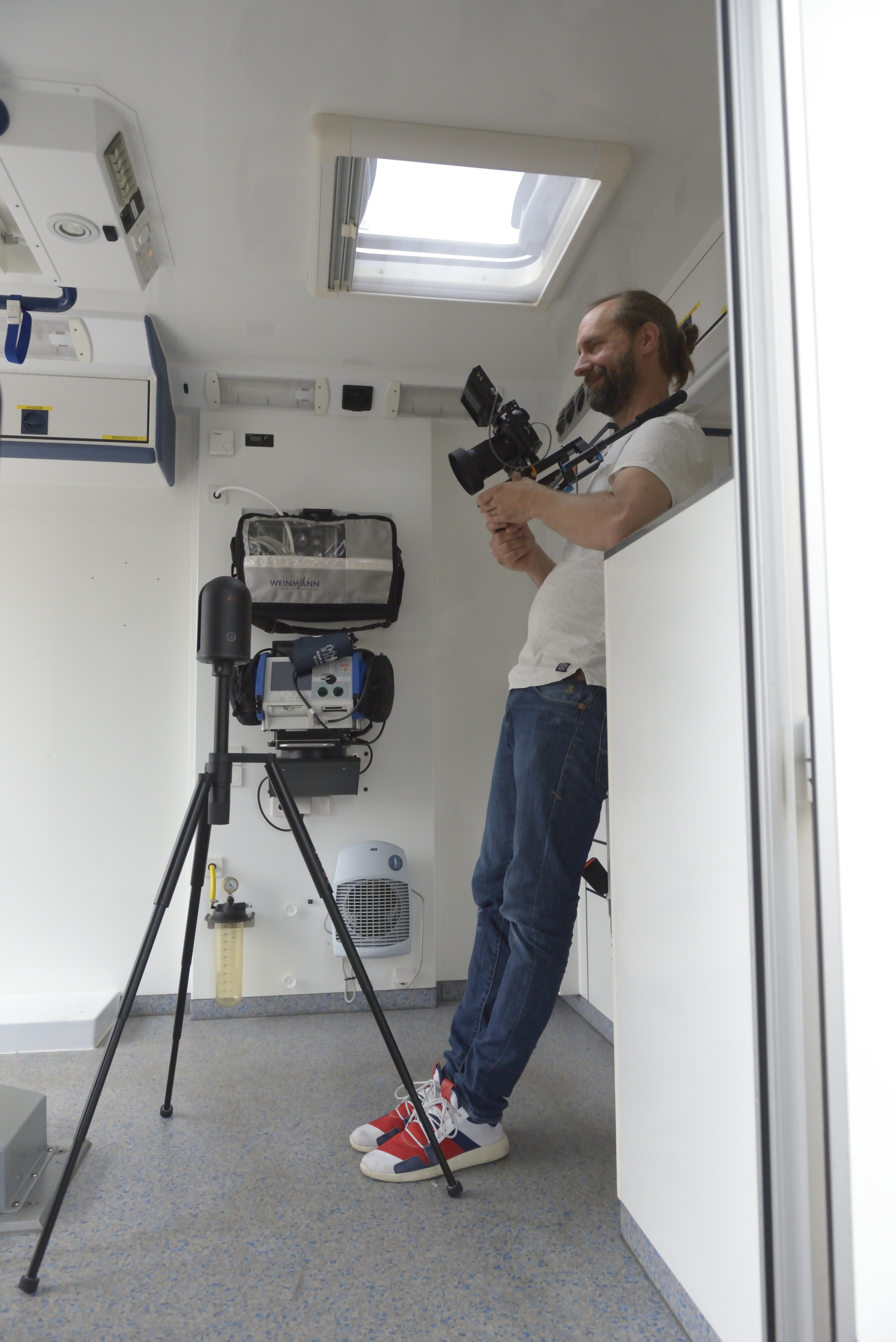 Thomas and his team took on the challenge of documenting the exact dimensions and imagery of the interior of a German Red Cross ambulance. They had no experience with laser scanning or reality capture tools, however, Leica Geosystems was happy to loan a BLK360 imaging laser scanner to Thomas so that he could scan DRK ambulance interiors—and his team was able to create an exact VR replica of the ambulance interior for training purposes. Because of the BLK360’s simple operation, Thomas was able to capture every dimension of the space and all specialized equipment with multiple scans.
Thomas and his team took on the challenge of documenting the exact dimensions and imagery of the interior of a German Red Cross ambulance. They had no experience with laser scanning or reality capture tools, however, Leica Geosystems was happy to loan a BLK360 imaging laser scanner to Thomas so that he could scan DRK ambulance interiors—and his team was able to create an exact VR replica of the ambulance interior for training purposes. Because of the BLK360’s simple operation, Thomas was able to capture every dimension of the space and all specialized equipment with multiple scans.
“This was really about making a perfect copy of an ambulance,” Thomas said. “Red Cross rescue vehicles are standardized. In Germany, they are all exactly the same on the inside. This training sets the first standard. We intend to go further and create global training modules that can be used, for example, in the Middle East or Southeast Asia as their Red Cross ambulances are similar on the inside, except for some small differences.”
This approach to VR training has made incredible impacts not just on cost and time savings for training volunteers, but also for access to training. “Rather than people always coming to headquarters for training, they can do it at home, or wherever else they are,” Thomas said. “We use VR headsets which are 100% mobile and not dependent on the internet, so it doesn’t matter where people live. They can still do the basic training, and it makes the training for volunteers more attractive because it frees up time for them as well.”
From the reactions the DRK has received within Germany, this was a way to bring volunteer training up to 21st century standards—and because volunteer organizations often compete for volunteers, it helps the DRK bring in more volunteers. “Actual VR applications gives trainees the feel and look, down to the last pixel, of the inside of the ambulance,” Thomas said. “From there, we are using this to promote it across all associations that are linked to the German Red Cross, including other rescue organizations.”
Thomas also notes that the support from the community for this type of training has been overwhelmingly positive—the public knows that the better trained each paramedic is, the better able they are to respond to any type of emergency. The more time that is saved from training means that the volunteers are happier and want to stay with the organization longer. And it also enables the DRK to keep all ambulances active and ready for rescue work instead of being used for on-site training.
“German life would stand still without volunteers,” Thomas said. “No weekend events, no street festivals, concerts, sports, nothing. By law, all these public events must be covered by paramedics. So, people understand the importance of volunteering, and they are extremely willing to help. That is the most rewarding part of this project.”
Disclaimer: This article features the Leica BLK360 G1. Explore the expanded capabilities of the latest BLK360 model here.

